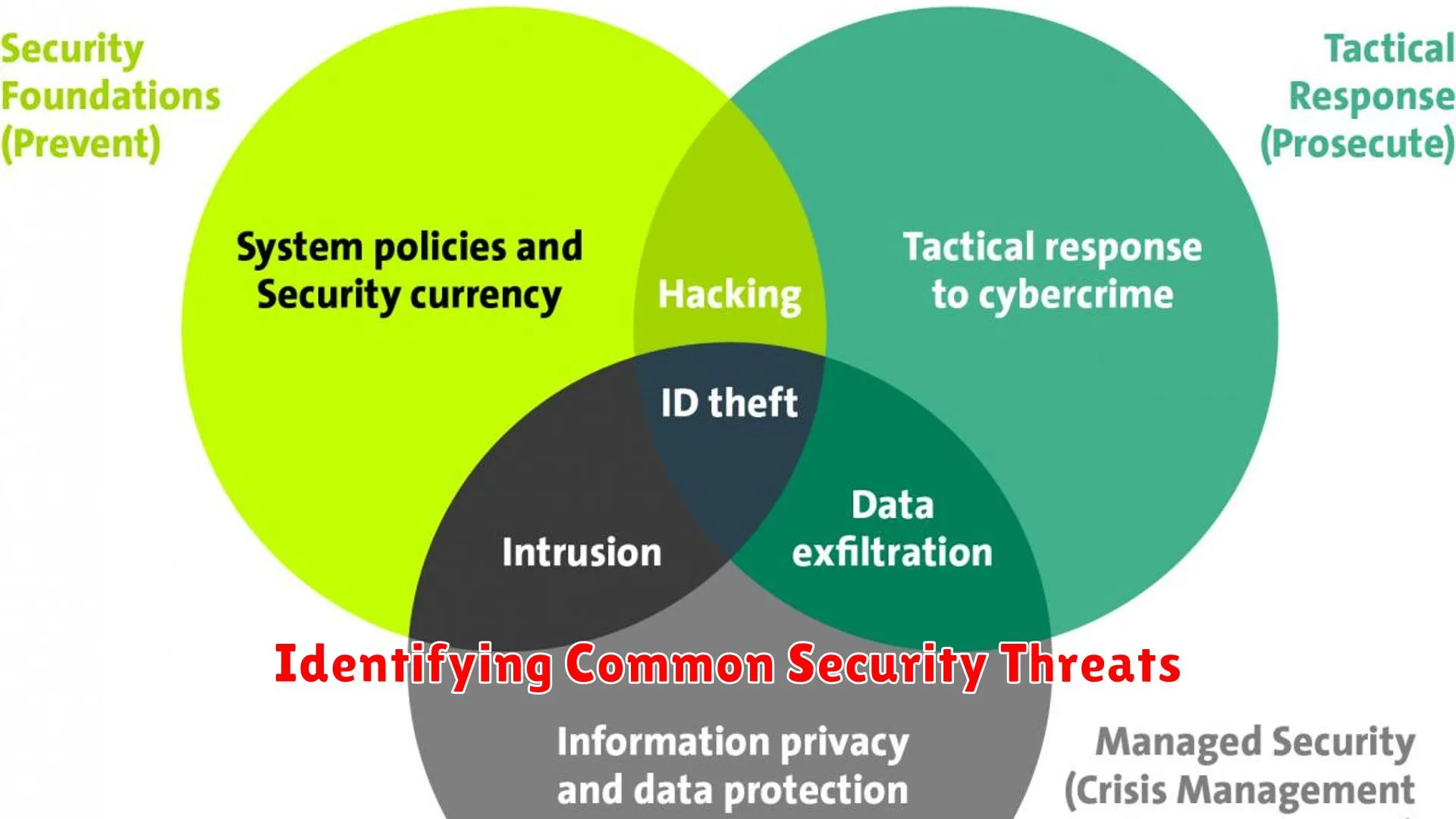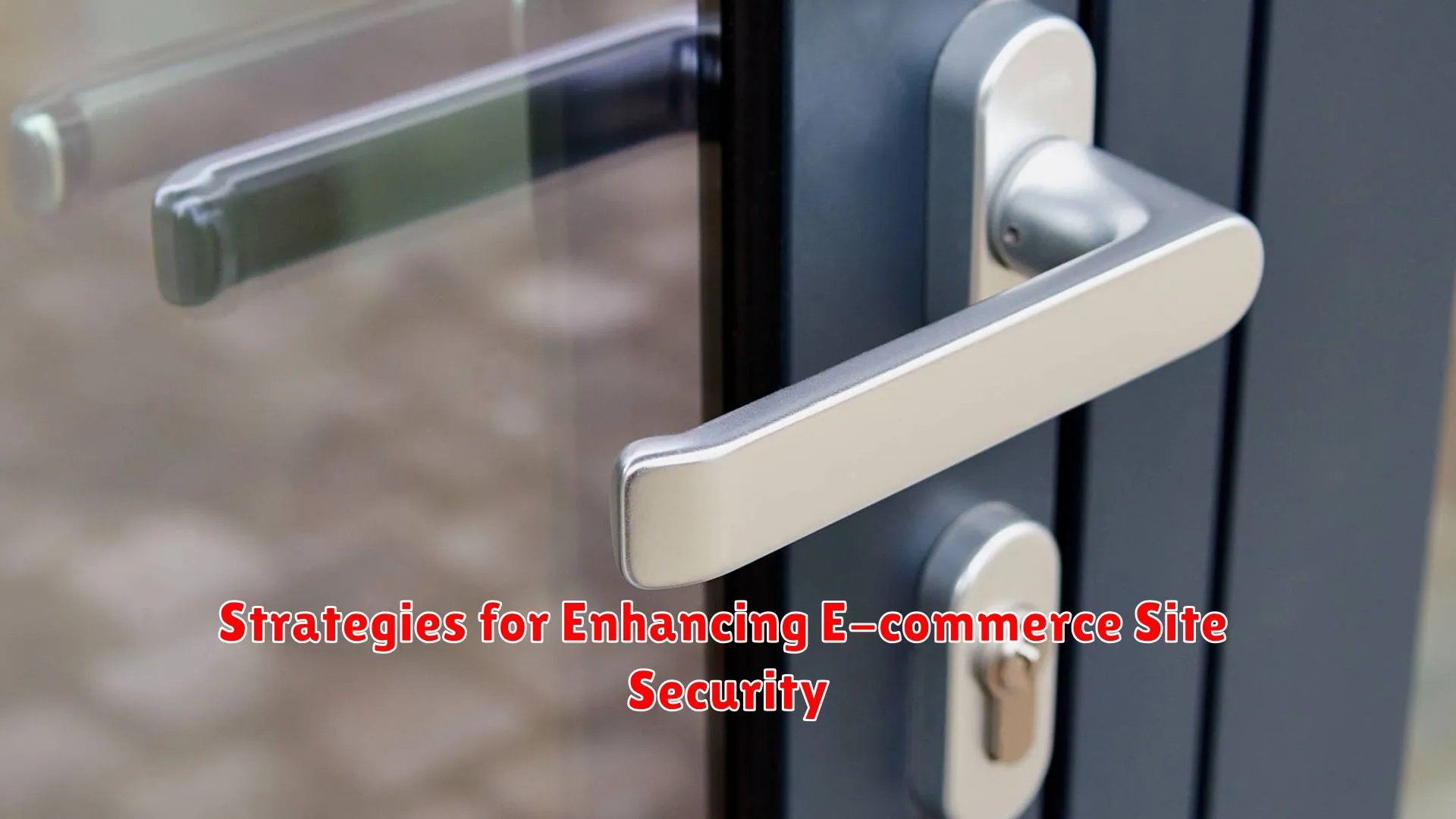In the age of online transactions, safeguarding your e-commerce site is paramount. Discover effective strategies for enhancing the security of your online store to protect valuable customer data and boost trust in your platform.
Identifying Common Security Threats

When it comes to enhancing security for your e-commerce site, understanding and identifying common security threats is crucial. By being aware of the potential risks, you can better prepare and implement strategies to safeguard your online business from malicious attacks.
Some of the common security threats that e-commerce sites often face include:
- Phishing Attacks: This is a fraudulent attempt to obtain sensitive information such as usernames, passwords, and credit card details by posing as a trustworthy entity.
- Malware Infections: Malicious software can infect your site and compromise sensitive data, leading to financial loss and damage to your reputation.
- SQL Injection: Hackers use SQL injection attacks to gain unauthorized access to your site’s database, allowing them to steal or manipulate information.
- DDoS Attacks: Distributed Denial of Service attacks aim to overwhelm your servers with a flood of traffic, causing your site to become inaccessible to legitimate users.
By recognizing these common security threats, you can take proactive steps to enhance the security of your e-commerce site. Implementing robust security measures, regularly updating software, conducting security audits, and educating your team about safe online practices are essential steps in safeguarding your e-commerce business.
Implementing Strong Security Measures

Enhancing the security of an e-commerce site is crucial in safeguarding sensitive data and maintaining customer trust. Implementing strong security measures is paramount in preventing cyber attacks and ensuring a safe online shopping environment for both the business and its customers.
1. Encrypted Connection
One of the fundamental steps in enhancing e-commerce security is to establish an encrypted connection using Secure Socket Layer (SSL) or Transport Layer Security (TLS) protocols. This encryption helps secure data transmission between the user’s browser and the server, protecting sensitive information such as credit card details.
2. Implement Multi-Factor Authentication
Utilizing multi-factor authentication (MFA) adds an extra layer of security to the login process. By requiring users to provide multiple forms of verification, such as a password along with a code sent to their device, the likelihood of unauthorized access is significantly reduced.
3. Regular Security Audits
Conducting regular security audits and vulnerability assessments on the e-commerce site is essential to identify and address any potential security loopholes. By continuously monitoring and testing the site’s security defenses, businesses can stay one step ahead of cyber threats.
4. Secure Payment Gateways
Integrating secure payment gateways that comply with industry standards such as Payment Card Industry Data Security Standard (PCI DSS) ensures that financial transactions are processed safely. Choosing reputable payment processors can enhance the overall security of the e-commerce platform.
5. Educate Employees and Customers
Proper education and training for employees on cybersecurity best practices can help prevent internal breaches. Additionally, educating customers on safe online shopping habits, such as creating strong passwords and recognizing phishing attempts, can contribute to a more secure e-commerce environment.
Regular Security Audits and Updates

One of the most crucial strategies for enhancing e-commerce site security is the implementation of regular security audits and updates. These proactive measures help in identifying vulnerabilities and keeping the site protected from potential cyber threats.
Regular Security Audits: Conducting frequent security audits involves thoroughly assessing the e-commerce site’s security protocols, encryption methods, access controls, and monitoring systems. This process helps in detecting any existing weaknesses and addressing them promptly to ensure a robust security infrastructure.
Timely Updates: Keeping software, plugins, and security patches up to date is essential for maintaining a secure e-commerce platform. Regularly updating these components helps in patching known vulnerabilities and reducing the risk of unauthorized access or data breaches.
Automated Monitoring: Implementing automated security monitoring tools can provide real-time alerts about any suspicious activities or anomalies on the site. This proactive approach enables swift responses to potential security incidents and helps in mitigating risks effectively.
Continuous Training: Educating e-commerce site administrators, developers, and staff members on the latest security best practices and emerging threats is vital for enhancing overall security posture. Regular training sessions can help in promoting a security-conscious culture and empowering individuals to recognize and respond to potential security issues.
Educating Customers on Safe Online Shopping Practices

As e-commerce businesses strive to enhance their site security, it is crucial to also focus on educating customers about safe online shopping practices. Implementing robust security measures on the platform is essential, but ensuring that customers understand how to protect themselves is equally important.
1. Secure Payment Methods: Encourage customers to use secure payment methods such as credit cards or reputable digital wallets that offer buyer protection. Advise them to avoid sharing sensitive information like passwords or credit card details through unsecured channels.
2. Awareness of Phishing Scams: Educate customers about the dangers of phishing scams where cybercriminals mimic legitimate websites to steal personal information. Remind them to verify website URLs, look for secure connection indicators like HTTPS, and avoid clicking on suspicious links received via email or messages.
3. Strong Password Practices: Stress the importance of creating strong, unique passwords for their accounts and the significance of regularly updating them. Recommend using a mix of letters, numbers, and symbols for enhanced security.
4. Two-Factor Authentication: Encourage customers to enable two-factor authentication whenever possible to add an extra layer of security to their accounts. This additional step can prevent unauthorized access even if passwords are compromised.
5. Updated Anti-Virus Software: Remind customers to keep their devices protected with updated anti-virus software to safeguard against malware and viruses that could compromise their information during online transactions.
By educating customers on these safe online shopping practices, e-commerce businesses can empower them to make informed decisions and navigate the digital marketplace securely, contributing to a positive shopping experience and building trust in the platform.
Responding to Security Breaches

In the fast-paced world of e-commerce, security breaches are a common threat that businesses need to be prepared to address promptly and effectively. When a security breach occurs on an e-commerce site, quick and decisive action is essential to minimize the impact on customers and the company’s reputation.
1. Identify the Breach: The first step in responding to a security breach is to identify the source and extent of the breach. This involves conducting a thorough investigation to determine what data has been compromised and how the breach occurred.
2. Notify Affected Parties: Once the breach has been identified, it is crucial to notify affected customers, partners, and other relevant stakeholders about the incident. Transparency is key in building trust and maintaining credibility.
3. Contain the Breach: After notifying affected parties, the next priority is to contain the breach to prevent further unauthorized access to sensitive data. This may involve isolating affected systems, implementing security patches, and changing passwords.
4. Improve Security Measures: Following a security breach, it is important to enhance security measures to prevent future incidents. This may include implementing multi-factor authentication, regular security audits, and employee training on cybersecurity best practices.
5. Monitor and Evaluate: Continuous monitoring and evaluation of security protocols are essential to staying ahead of potential threats. Regularly updating and testing security systems can help identify vulnerabilities before they can be exploited by malicious actors.
Conclusion
Implementing robust security measures, such as SSL certificates, two-factor authentication, and regular security audits, are crucial for bolstering e-commerce site security and protecting customer data.

